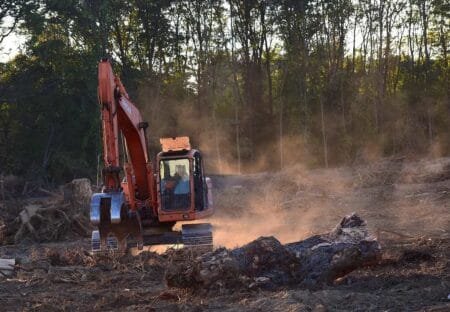Understanding How External Factors Affect the Performance of Fasteners and Fixings in the UK
Industrial fasteners and fixings play a crucial role in the construction and manufacturing sectors, helping to hold together various components and materials. In the UK, fixings suppliers have to ensure that these components are capable of withstanding various environmental factors, including temperature, humidity, and other external conditions. This blog post will explore the impact of these environmental factors on industrial fasteners and fixings and discuss potential solutions to address these challenges.
The Effects of Temperature on Fasteners and Fixings
Temperature fluctuations can significantly impact the performance and integrity of fasteners and fixings. In the UK, temperatures can vary greatly throughout the year, with cold winters and warm summers. These temperature changes can cause fasteners to expand and contract, potentially leading to a loss of tightness and structural integrity.
1.1 Thermal Expansion and Contraction
Thermal expansion and contraction occur when materials expand as they heat up and contract as they cool down. This phenomenon can lead to fasteners and fixings loosening over time, which may cause catastrophic failure if not addressed.
1.2 Material Considerations
Different materials react differently to temperature changes. For instance, metals like stainless steel and aluminium have lower rates of thermal expansion compared to carbon steel. Fixings suppliers should consider the material composition of fasteners and fixings when determining their suitability for a specific application.
The Impact of Humidity on Fasteners and Fixings
Humidity is another environmental factor that can affect the performance of fasteners and fixings. In the UK, humidity levels can vary greatly, with coastal regions experiencing higher levels of moisture compared to inland areas.
2.1 Corrosion and Rust
High humidity levels can lead to increased moisture absorption, which may result in corrosion and rust. Corrosion can weaken the structure of fasteners and fixings, reducing their overall strength and load-bearing capacity.
2.2 Material Choices to Combat Humidity
To mitigate the effects of humidity, fixings suppliers may recommend using materials that are more resistant to corrosion, such as stainless steel, aluminium, and galvanized steel. These materials offer greater protection against rust and corrosion, ensuring the longevity and performance of fasteners and fixings.
Other Environmental Factors Affecting Fasteners and Fixings
In addition to temperature and humidity, several other environmental factors can impact the performance of fasteners and fixings in the UK. These factors include:
3.1 Ultraviolet (UV) Radiation
Prolonged exposure to UV radiation can cause fasteners and fixings to degrade over time. This is particularly true for plastic fasteners, which can become brittle and weak when exposed to UV radiation. To combat this issue, fixings suppliers may recommend using UV-resistant materials or applying protective coatings to fasteners and fixings.
3.2 Chemical Exposure
Fasteners and fixings can also be affected by exposure to various chemicals, including acids, alkalis, and solvents. These chemicals can cause corrosion, weakening the structure of fasteners and fixings. To prevent this, it is essential to choose materials that are resistant to chemical attack or apply protective coatings to fasteners and fixings.
Best Practices for Selecting Fasteners and Fixings
To ensure the optimal performance of fasteners and fixings in the face of environmental challenges, fixings suppliers and end-users should consider the following best practices:
4.1 Assess the Application Environment
Before selecting fasteners and fixings, it is crucial to assess the environment in which they will be used. This includes evaluating factors such as temperature, humidity, UV radiation, and chemical exposure. Understanding the environmental conditions will help in choosing the most suitable materials and coatings for fasteners and fixings.
4.2 Select the Right Material
As mentioned earlier, the choice of material can greatly impact the performance and longevity of fasteners and fixings. Fixings suppliers should consider factors such as corrosion resistance, thermal expansion, and chemical compatibility when recommending materials for a specific application.
4.3 Protective Coatings
Applying protective coatings can help to extend the lifespan of fasteners and fixings, particularly in harsh environments. Some common coatings include zinc, hot-dip galvanisation, and powder coating, all of which offer varying levels of protection against environmental factors.
4.4 Regular Maintenance and Inspection
Regular maintenance and inspection of fasteners and fixings can help to identify potential issues early on, allowing for prompt remediation. This is particularly important in applications where fasteners and fixings are subjected to harsh environmental conditions or are critical to the structural integrity of a project.
Collaborating with Reliable Fixings Suppliers
Working closely with a reputable fixings supplier is essential to ensure the best possible performance of fasteners and fixings. A reliable supplier can provide guidance on material selection, protective coatings, and maintenance best practices. They can also offer bespoke solutions tailored to the specific needs of a project, taking into account the unique environmental challenges faced in the UK.
Conclusion
Environmental factors such as temperature, humidity, UV radiation, and chemical exposure can have significant impacts on the performance and lifespan of industrial fasteners and fixings. By understanding these factors and implementing best practices for material selection, protective coatings, and maintenance, fixings suppliers and end-users can ensure the optimal performance and longevity of these critical components.
By working closely with reliable fixings suppliers, those in the construction and manufacturing sectors can ensure their projects are built to last, with fasteners and fixings that can withstand the unique challenges of the UK’s environment.







